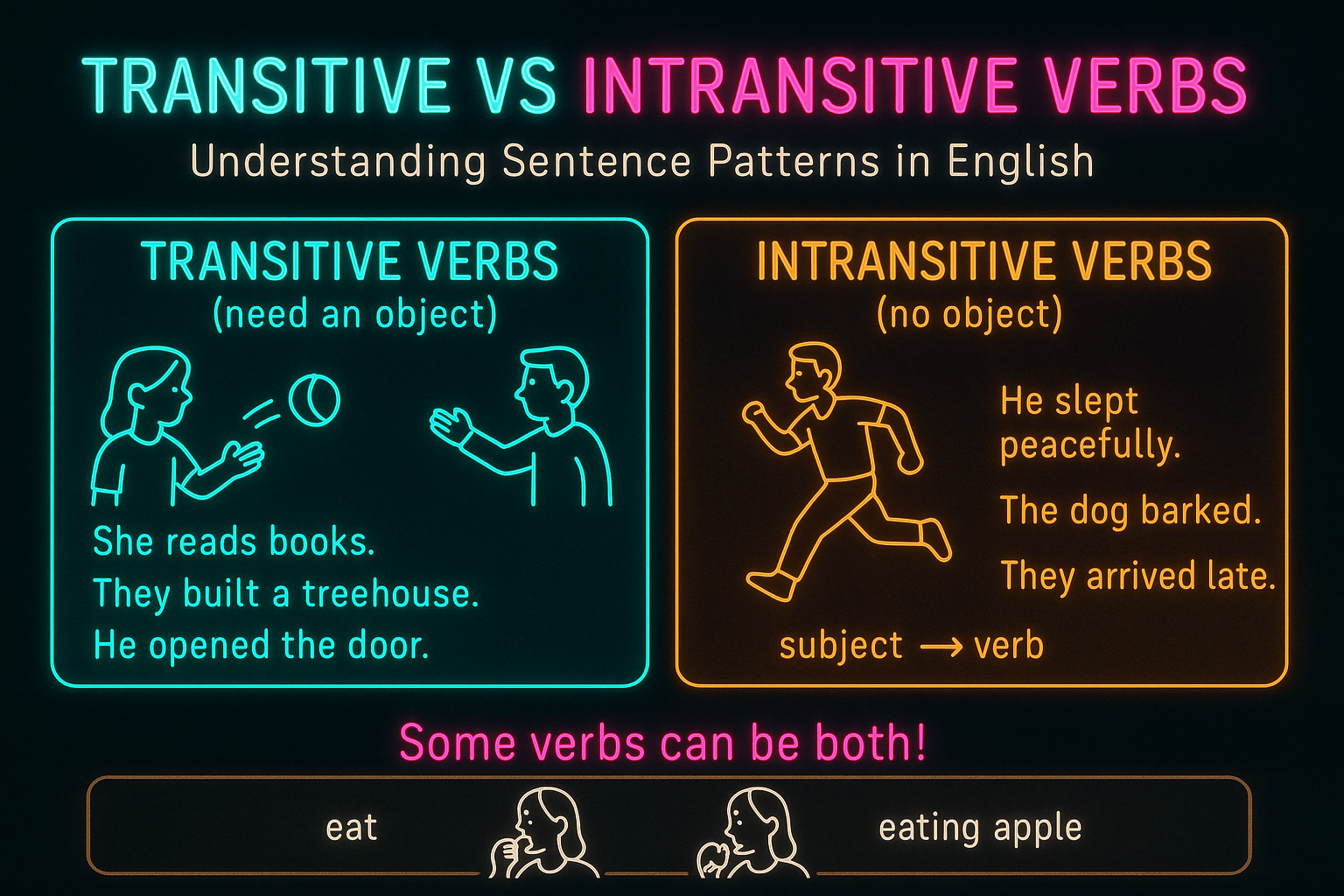Verbs play a crucial role in forming sentences and conveying actions. Understanding the difference between transitive and intransitive verbs is essential for grammar and sentence construction. These two types of verbs have distinct characteristics that affect how they are used in sentences.
Transitive and intransitive verbs are terms used in grammar to describe the relationship between the verb and the object of the action. While transitive verbs require a direct object to complete their meaning, intransitive verbs do not need an object to make sense. Let’s explore the differences between these two types of verbs in more detail.
Difference Between Transitive and Intransitive
Transitive verbs are action verbs that require a direct object to complete their meaning. The direct object is the recipient of the action performed by the verb. For example, in the sentence “She ate the apple,” the verb “ate” is transitive, and “the apple” is the direct object that receives the action of eating.
In contrast, intransitive verbs do not require a direct object to complete their meaning. These verbs express actions or states that do not transfer to an object. For example, in the sentence “He sleeps peacefully,” the verb “sleeps” is intransitive because it does not require a direct object to make sense. The action of sleeping is complete without any additional information.
Another key difference between transitive and intransitive verbs is their ability to be used in passive constructions. Transitive verbs can be transformed into passive voice sentences, where the object of the action becomes the subject of the sentence. Intransitive verbs, on the other hand, cannot be used in passive constructions because they do not have a direct object to become the subject of the sentence.
It is important to note that some verbs can be both transitive and intransitive depending on how they are used in a sentence. For example, the verb “run” can be transitive when followed by a direct object (“She runs a marathon”) or intransitive when used without an object (“He runs every morning”). Understanding the context and usage of these verbs is crucial for accurate sentence construction.
In conclusion, transitive and intransitive verbs differ in their requirement for a direct object to complete their meaning. Transitive verbs need a direct object to convey the action performed, while intransitive verbs do not require an object to make sense. By recognizing these differences, writers can effectively use verbs in sentences to communicate their intended meaning.
